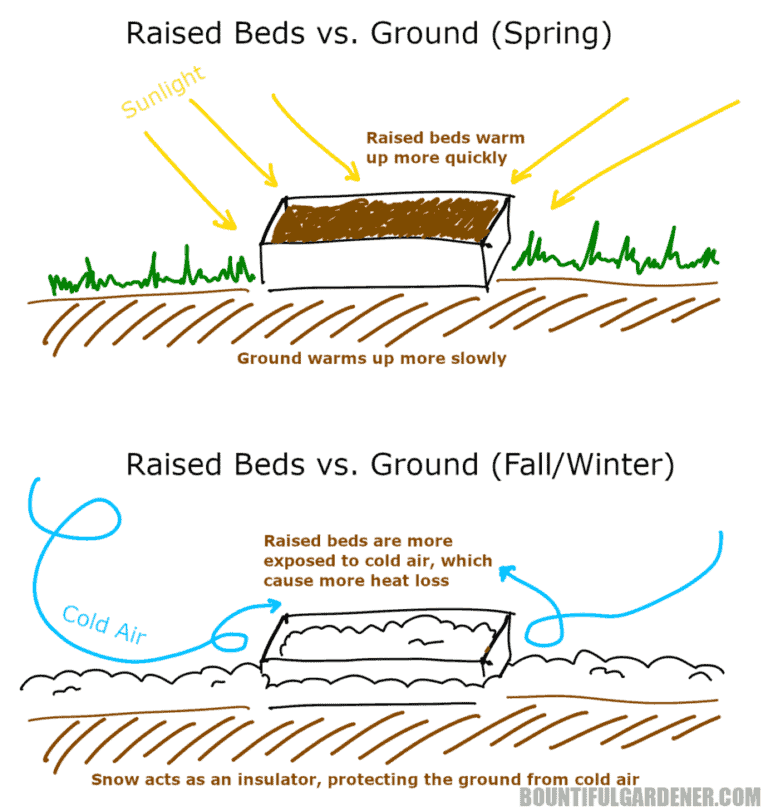What Are The Benefits Of Using Raised Beds For Improved Soil Warming In Colder Climates?
Are you considering switching from traditional ground gardens to raised beds? One of the main concerns many farmers have when considering raised beds is whether or not the beds will be warmer than the ground. With the popularity of this type of gardening on the rise, it's important to understand how raised beds work and whether they can provide a warm environment for your plants. So, let's dive in and explore the topic of raised beds in more detail. Raised Beds: A Brief Overview A raised bed is a type of garden bed that is elevated off the ground. Rather than planting directly in the soil, the bed is filled with a mixture of soil and compost for growing your plants. They can be constructed using a variety of materials, including wood, rock, concrete, or even metal. The main advantages of using raised beds are that they provide better drainage, reduce soil compaction, and make it easier to control pests and weeds. So, Are Raised Beds Warmer Than the Ground? The short answer is yes, raised beds are generally warmer than the ground. However, there are a variety of factors that can affect the temperature of your raised bed, such as the design, materials used, and location. Here we'll dive into some of these factors and why they matter. 1. Height and Volume of Soil The height of your raised bed can have a significant impact on its temperature. Generally, the deeper the bed, the more heat it will retain. This is because the soil acts as a thermal mass, absorbing heat during the day and releasing it at night. A taller bed will also allow for better drainage, which can help prevent waterlogging and soil compaction. The volume of soil in your raised bed is also important to consider. A larger volume of soil will retain more heat than a smaller volume, so this is something to keep in mind when deciding on the size of your bed. 2. Location and Orientation The location and orientation of your raised bed can also affect its temperature. Ideally, you want to place your bed in a location that receives plenty of sunlight throughout the day. This will help to warm up the soil and create a warm microclimate within the bed. The orientation of your bed can also impact its temperature. A south-facing bed will receive the most sun exposure, while a north-facing bed will receive less. If you live in a hot area, you may want to consider orienting your bed to the east or west to avoid overheating during the hottest part of the day. 3. Materials Used The type of materials used to construct your raised bed can also impact its temperature. Some materials, such as stone or concrete, can absorb and retain heat better than others. These materials are great choices if you live in a cooler climate or want to extend your growing season. Wood is another popular choice for raised beds but may not retain heat as well as stone or concrete. However, wood can be a good choice if you live in a hot climate because it naturally insulates the soil, keeping it cooler during the day. 4. Use of Coverings Another way to control the temperature of your raised bed is by using coverings. Coverings such as row covers, cloths, or plastic can help to regulate the temperature by trapping in heat during the day and insulating the bed at night. These coverings can also help to protect your plants from pests and weather, making them a useful addition to any raised bed garden. 5. Soil Type Finally, the type of soil you use in your raised bed can affect its temperature. Soil that contains a high percentage of organic matter, such as compost, will retain more moisture and heat than soil that lacks organic matter. Choose a soil mix that is specifically designed for raised beds and has a good balance of nutrients, drainage, and water retention. In Conclusion In summary, raised beds can be warmer than the ground due to a variety of factors such as the height and volume of soil, location and orientation, materials used, use of coverings, and the soil type. By understanding these factors and making informed choices about your raised bed design, you can create a warm and fertile environment for your plants to thrive in. Are you ready to give raised beds a try in your farm or garden? We hope that this post has provided you with the information you need to get started. Happy gardening! 



benefits raised beds garden bed infographic build gardening vegetables building vegetable visual year custommade flowers final click own start soil

raised beds colder

soil raised garden bed beds dirt hands compost heap type which education organic holding gardeningknowhow
